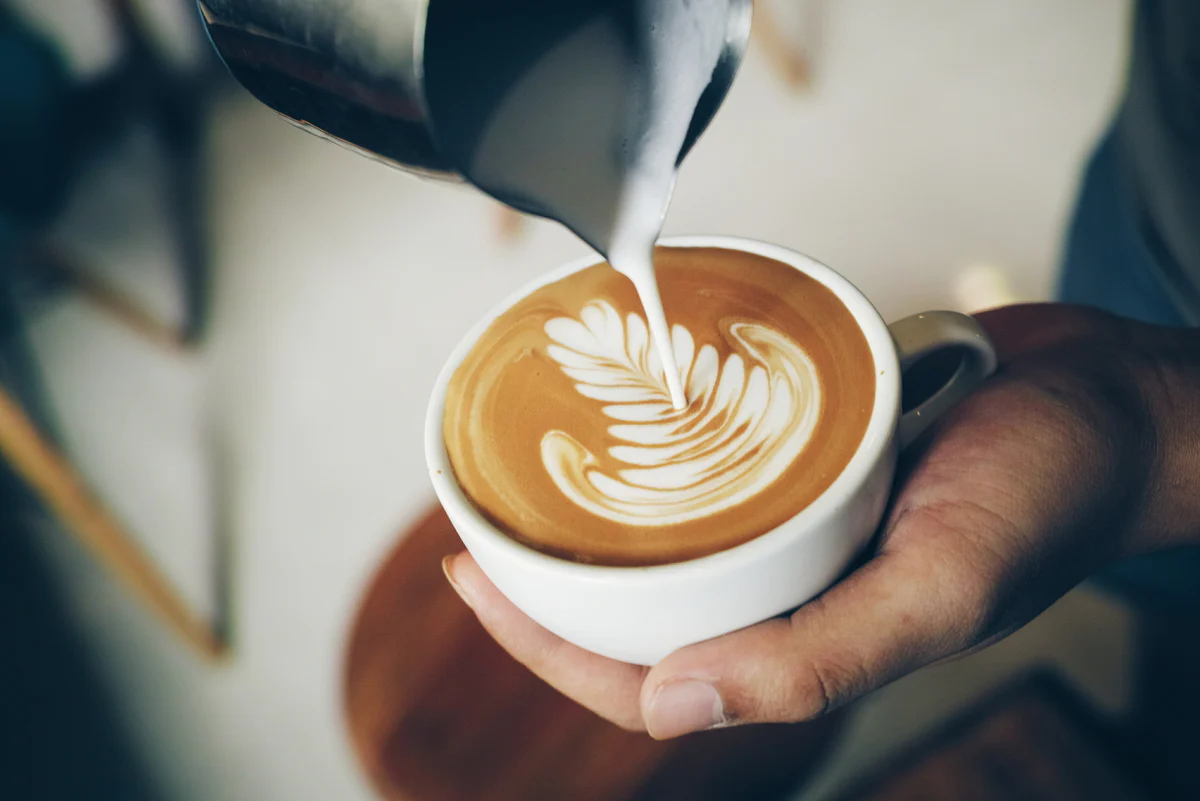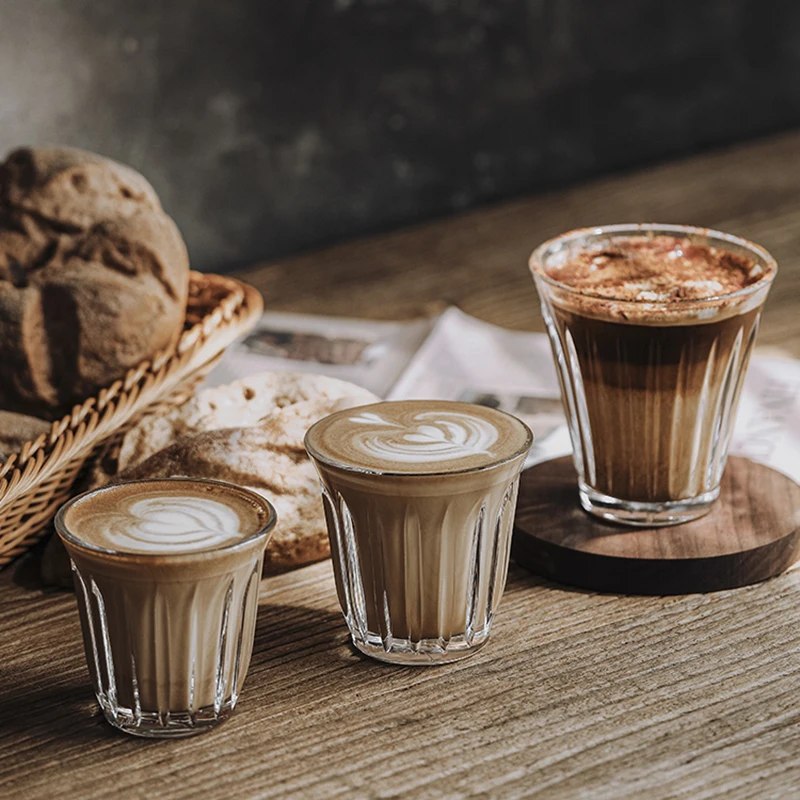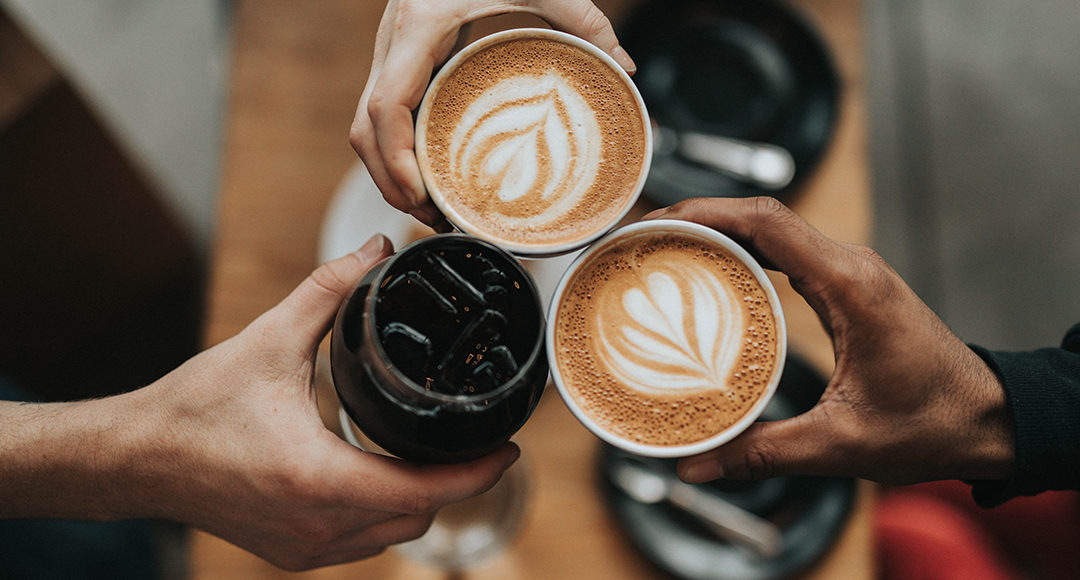Latte is a type of coffee loved all over the world. The aromatic flavor of coffee and the fatty taste of cream, this combination will satisfy any guest. Whether it’s a gloomy morning or a sunny day, a cup of latte will fill you with excitement. But many people still may need to learn what latte is, the origin of latte, and how they are different from regular coffee. Is the difference just the layer of cream on top. Let’s see in Nawon’s article below.
What is latte
“Latte” is an Italian word that translates to “milk” in English. However, when people refer to a “latte” in the context of coffee, they are typically talking about a popular espresso-based drink. A latte is made with espresso and steamed milk, and it usually has a small amount of frothed milk on top. The ratio of espresso to steamed milk varies, but a common ratio is one or two shots of espresso to about 6 to 8 ounces of steamed milk.
See more: What is The Difference Between Espresso vs Coffee?
The word “latte” is often used to describe a cafe au lait in Europe, which is simply coffee with milk. In the United States and some other countries, “latte” has become synonymous with a specific espresso drink as described above. Additionally, flavored syrups such as vanilla or caramel are often added to lattes for extra flavor.

Latte origins
The origins of the latte aren’t very clear as people have been combining coffee and milk for centuries. The term “latte” comes from the Italian caffè latte, which means “milk coffee.” The drink itself, however, has roots in European coffee traditions. In Italy, a caffè latte typically refers to coffee mixed with a large amount of hot milk, and it has been a part of Italian coffee culture for many years.
The concept of mixing coffee with milk is not exclusive to Italy. In France, café au lait is a similar beverage, consisting of equal parts coffee and hot milk. In Spain, café con leche is a popular choice, made with strong coffee and an equal amount of hot milk.

However, the silky beverage that we know and love today is thought to have originated in America, hitting the peak of popularity in Seattle during the 80’s. The modern espresso-based latte, as it is commonly known today, gained popularity in the United States during the coffeehouse boom in the 1980s and 1990s. This period saw the rise of specialty coffee shops where baristas started to experiment with various coffee preparations and drinks. The espresso-based latte, with its combination of strong espresso and steamed milk, became a favorite among coffee enthusiasts and is now a standard menu item in coffee shops around the world.
Latte vs Coffee – Comparison Guide
This is a table summarizing the most obvious differences between a latte and regular coffee. Note that this table is based on commonly used cafes and lattes, excluding variations. To better understand these differences, read more below.
| Characteristics | Latte | Coffee |
| Coffee Type | espresso | Brewed coffee |
| Milk | Yes, 3/4 cup (0.18 l) | No milk |
| Taste | Smooth, creamy texture and a rich caramel flavor | Strong, bitter, and acidic flavor |
| Strength | Low to medium strength | Medium to high strength |
| Caffeine content | Low – 68mg | High – 170mg to 220mg |
| Calories per serving | 110 calories | Virtually no calories without sugars |
| Topping | milk foam on top | without topping or jelly maybe |
Brewing Method
Coffee is typically brewed using ground coffee beans and hot water. Lattes use espresso as their base, which is created by applying pressure to finely ground coffee beans in combination with near-boiling water. This is achieved using an espresso machine. A latte is typically prepared by combining approximately 1/3 espresso, 2/3 steamed milk, and a small layer of microfoam on top.
Caffeine content
The caffeine content in a latte is much lower than regular coffee. Lattes are made from espresso, containing about 64 mg of caffeine in one cup (1 oz or 30 grams). However, some lattes may include a double shot, essentially using two shots of espresso, increasing the total caffeine content to about 128 mg. Besides, the amount of milk in latte can dilute the caffeine. Therefore, if you need to supplement a high amount of caffeine and like strong and strong coffee, perhaps a latte will not be suitable for you.
In contrast, a regular 8-ounce cup of coffee contains about 100 to 140 mg of caffeine. Depending on the type of beans you use to make coffee. In general, coffee has a higher caffeine content than latte.
Calories and Nutrients
Have you ever heard that drinking coffee can help you lose weight? Exactly, because coffee has almost no calories or nutrients. As for latte, on the contrary, the sweet and fatty flavor from the steamed cream also comes with a significant calorie content. The milk in a latte also provides essential nutrients like calcium and protein, depending on the type of milk used (regular, skim or plant-based milk).
The last sentence
In conclusion, latte and coffee are really different. Which drink to choose depends on your preferences. If you are someone who does not enjoy the strong and bold flavor of coffee, Nawon recommends that you try latte.
Nawon Beverage Supplier and Manufacturer provides premium quality coffee drinks from Vietnam. The place with the second largest export output of coffee and coffee drinks globally. If you are a retailer or a food distributor, check out Nawon’s coffee drinks. The sales and consulting team is always ready to support you 24/24 if you need any information about beverages or receive free samples or quotes. Thank you for your interest.

